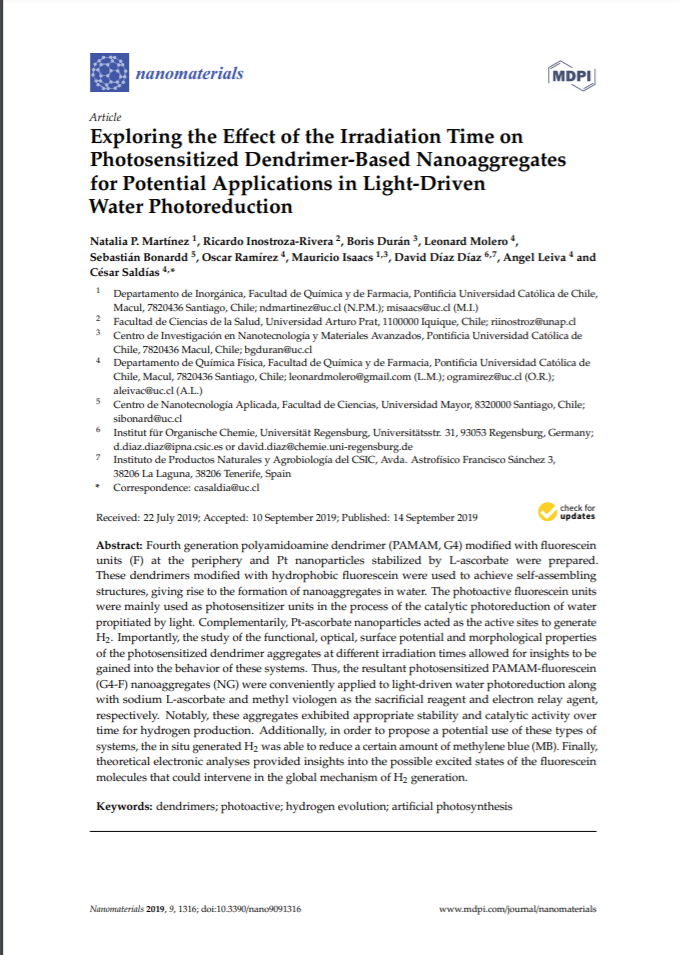Exploring the Effect of the Irradiation Time on Photosensitized Dendrimer-Based Nanoaggregates for Potential Applications in Light-Driven Water Photoreduction

Fecha
2019Autor
Bonardd, Sebastián [Univ Mayor, Fac Ciencias, Ctr Nanotecnol Aplicada]
Martínez, Natalia P.
Inostroza-Rivera, Ricardo
Durán, Boris
Molero, Leonard
Ramírez, Oscar
Isaacs, Mauricio
Díaz Díaz, David
Leiva, Angel
Saldias, César
Ubicación geográfica
Notas
HERRAMIENTAS
Acceda a títulos restringidos
¿Cómo descargar?Resumen
Fourth generation polyamidoamine dendrimer (PAMAM, G4) modified with fluorescein units (F) at the periphery and Pt nanoparticles stabilized by L-ascorbate were prepared. These dendrimers modified with hydrophobic fluorescein were used to achieve self-assembling structures, giving rise to the formation of nanoaggregates in water. The photoactive fluorescein units were mainly used as photosensitizer units in the process of the catalytic photoreduction of water propitiated by light. Complementarily, Pt-ascorbate nanoparticles acted as the active sites to generate H-2. Importantly, the study of the functional, optical, surface potential and morphological properties of the photosensitized dendrimer aggregates at different irradiation times allowed for insights to be gained into the behavior of these systems. Thus, the resultant photosensitized PAMAM-fluorescein (G4-F) nanoaggregates (NG) were conveniently applied to light-driven water photoreduction along with sodium L-ascorbate and methyl viologen as the sacrificial reagent and electron relay agent, respectively. Notably, these aggregates exhibited appropriate stability and catalytic activity over time for hydrogen production. Additionally, in order to propose a potential use of these types of systems, the in situ generated H-2 was able to reduce a certain amount of methylene blue (MB). Finally, theoretical electronic analyses provided insights into the possible excited states of the fluorescein molecules that could intervene in the global mechanism of H-2 generation.
Coleccion/es a la/s que pertenece:
Si usted es autor(a) de este documento y NO desea que su publicación tenga acceso público en este repositorio, por favor complete el formulario aquí.